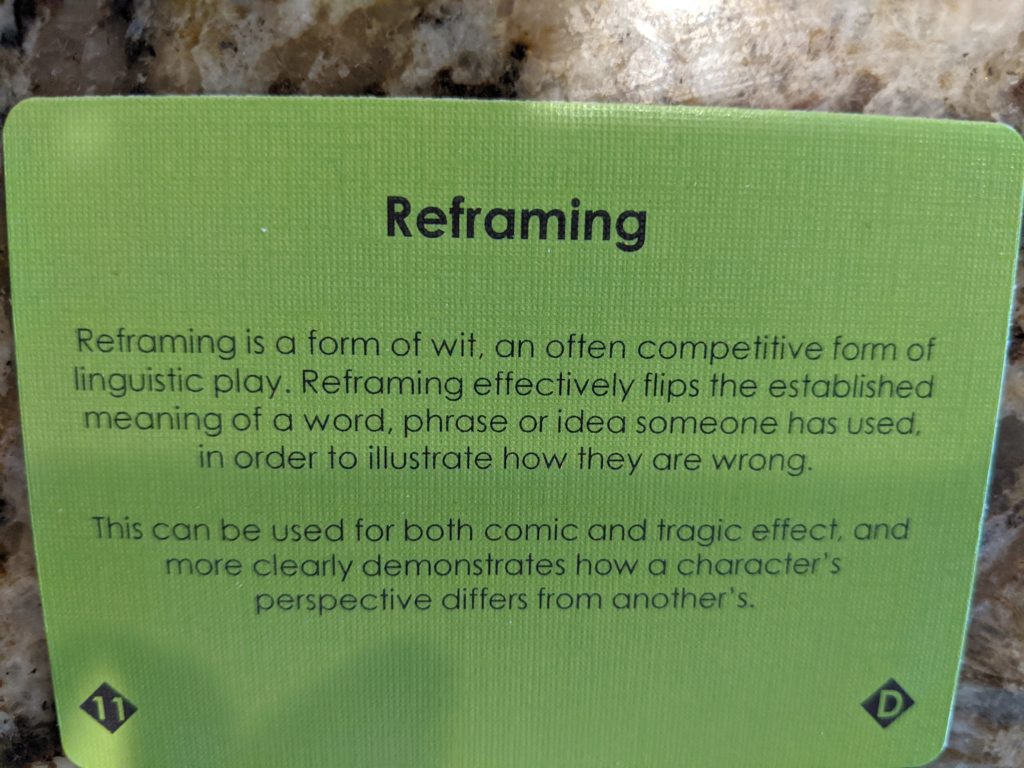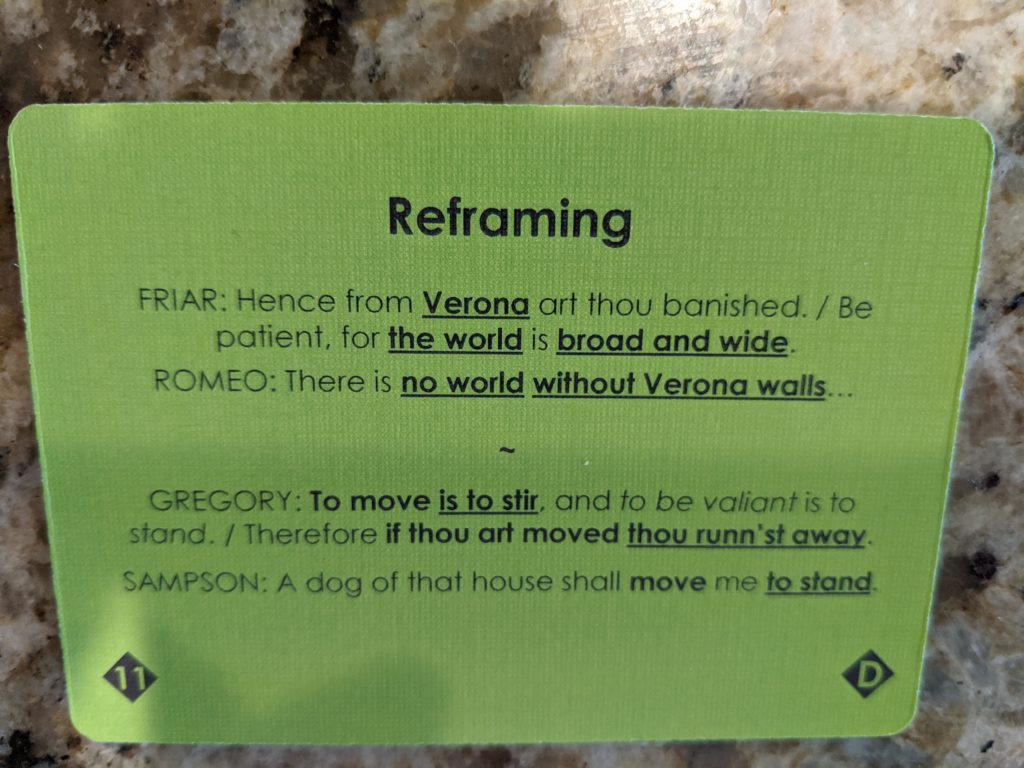I’m no actor, I think I’ve made that abundantly clear over the years. So when I first saw Robert Myles’ “The Shakespeare Deck,” described as an “actor’s toolkit”, I thought that’s not for me. Then Rob wrote to me directly and asked if I wanted a copy. I may not act but I am a fan of the text, and any tools for the toolbox that help dig deeper into the text, I’m all for. So now I happily have a copy 🙂
He’s got a great video explaining exactly what it is so I won’t try to copy him:
But I can tell you my own experience. It’s a very nice product, well made with sturdy, glossy cards. If anything I find the cards just a bit too slippery, it’s a little tricky holding the whole deck in your hand to shuffle through them, they want to go scattering on you if you’re not careful.
Each card is multi purpose. They are colored coded, numbered, “short coded” (my term not his), and double sided. That’s a lot of information packed into 45 cards. I’ve pulled one at random to use as an example:

Here we have a green card, which means it is from the “Rhetoric” section of the deck. Other sections include Forensic Linguistics, Working the Text, and Engaging the Audience. The D in the lower right corner tells us this is a Definition card, focused on explaining the technique used and its purpose. Some cards might have an E, for an exercise that actors can attempt to reinforce the idea. The 11 in the other corner reminds us where in the deck this card belongs so we can keep them in a particular order for developing round-robin or circuit training practice.

And here’s the other side – an example (in this case, two) of reframing. This the part I like. If I didn’t particularly get the first part, I understand the example.
Grabbing another card I find the orange Believe Your Eyes card, which tells me to “look for opportunities in the text to play a physical action that contrasts with the text,” referencing Richard III and Lady Anne (though not the actual text) as an example.
A random yellow card shows me “Antithesis”, offering up several text examples:
- “What he has lost, noble Macbeth has won.”
- “A fool thinks himself to be wise, but a wise man knows himself to be a fool.”
I just realized that, although I grabbed those at random, all three represent juxtaposition or opposites in one form or another. “move me to stir / move me to stand”, “physical action that contrasts the text”, “what he has lost Macbeth has won.” Shakespeare played with that idea a lot.
I think I like the green cards best, mostly because they map directly to examples from the text while also teaching me something new. I may have already known about simile and exaggeration, but “topos” and “kairos” were new to me!
Definitely a neat product, quite densely packed with information about the text. Hopefully it’s the kind of thing that my kids can use as well when they go through their own Shakespeare courses.
Does the name Rob Myles ring any bells yet? Right now he’s having his moment in the spotlight as the director of The Show Must Go Online, entirely virtual performances of Shakespeare’s complete works. Check it out if you haven’t yet, highly recommended! Getting more impressive every week!
Thanks Rob for the deck and for everything you’re bringing to the Shakespeare Universe.

you must read indian skakespeare – Chanakya niti in hindi